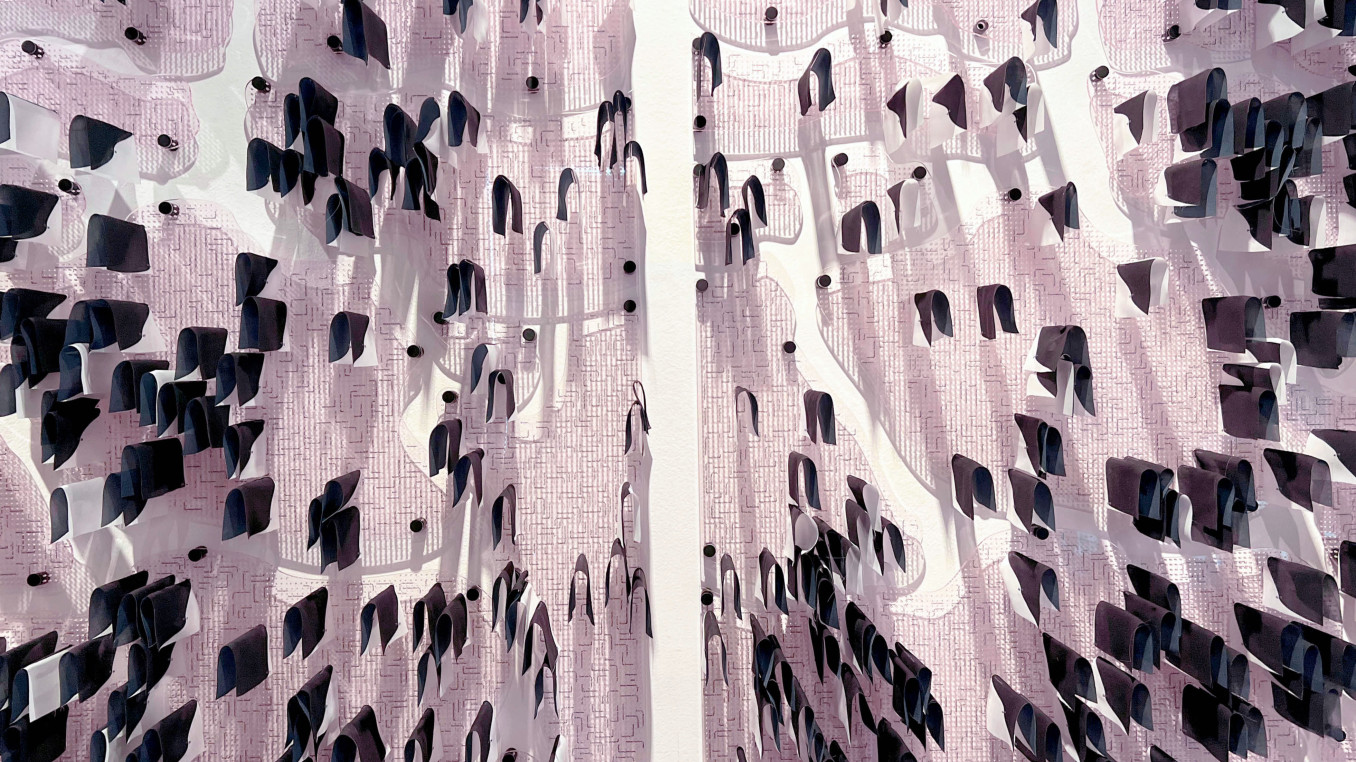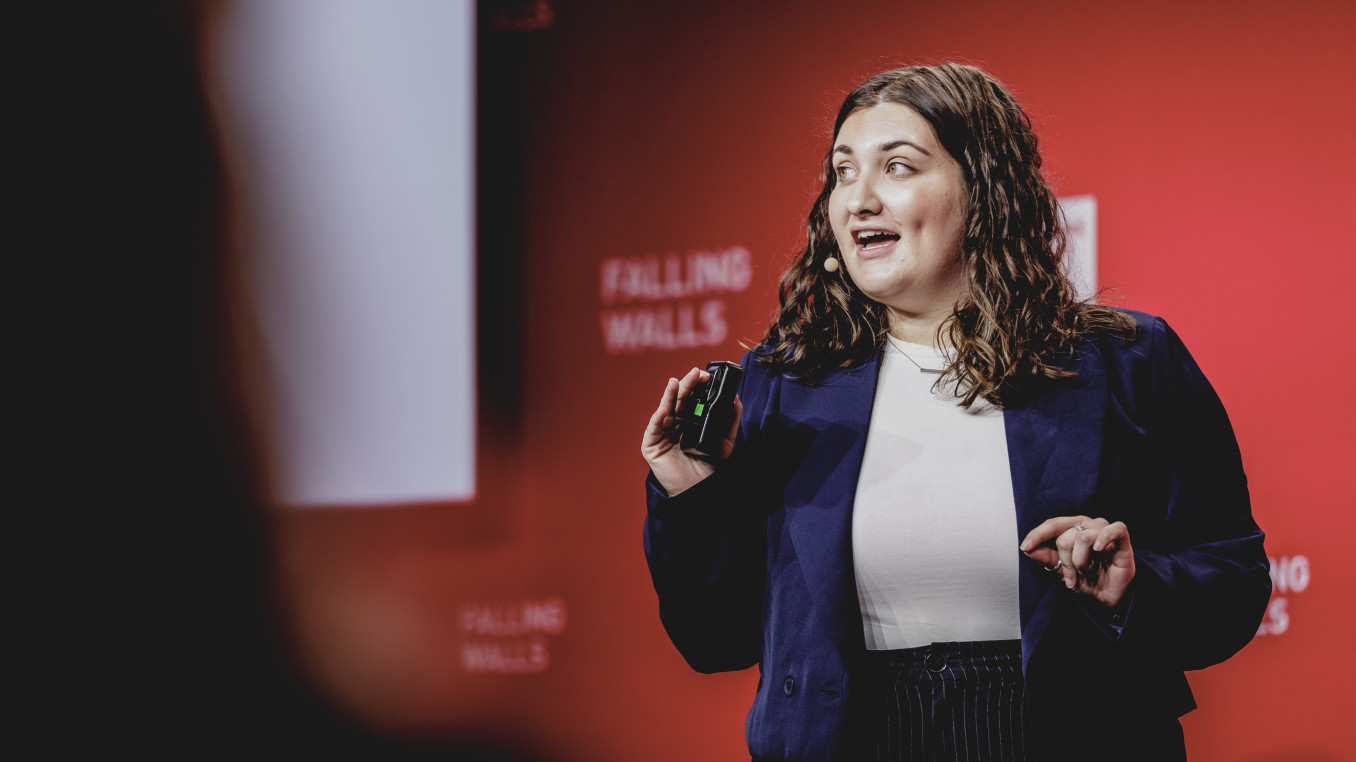Breaking the Wall of Material Science & Artistic Innovation
Breaking the Wall of Material Science & Artistic Innovation
Global Call 2025 Finalist Interview: Art & Science
Xin Liu (b. Xinjiang) is a multidisciplinary artist and engineer who creates sculptures, digital experiences and films that feature machinery, genetic material, petroleum and rocket debris to explore the verticality of space, extraterrestrial explorations and cosmic metabolism.
Xin is an artist-in-residence at SETI Institute and the founding Arts Curator in the Space Exploration Initiative at MIT Media Lab, a Visiting Fellow at Cornell Tech and an advisor for LACMA Art + Technology Lab.
Which wall does your research or project break?
The Permanent and Insatiable breaks the wall between scientific research and artistic experience. It reimagines the gallery as a living system of transformation, where active biological processes unfold in real time. By transforming complex scientific procedures such as enzymatic plastic degradation into visible, time-based installations, the project bridges the gap between laboratory experimentation and public imagination. In doing so, it redefines what counts as research, and who it is for.
The project challenges traditional notions of permanence and monumentality associated with sculptural installation by embracing decay and organic transformation. Waste becomes both medium and message: post-consumer PET plastics are shaped into miniature cityscapes modelled on downtown Houston and Manhattan’s financial district—symbols of industrial and economic growth—then slowly broken down by lab-grown enzymes. The process invites audiences to witness this dissolution, offering a space for aesthetic and ethical reflection on materiality, consumption and ecological time.
Built upon the artist’s prior MicroPET project—a 2018 research initiative that developed an enzymatic bioreactor flown to the International Space Station—the work extends scientific inquiry into new contexts. It collapses the boundaries between environmental science, material engineering, sculpture and narrative. The project traverses micro and macro scales, from enzyme behaviour to urban landscapes, from cellular degradation to planetary systems–and the complexity of living in a world built to endure and to decay.
What is the main goal of your research or project?
The Permanent and Insatiable explores the near-mythic tension at the heart of material science: the human desire to create indestructible permanence, even as we engineer bio-organisms designed to consume those very materials. The project responds to a deep contradiction: our obsession with what lasts forever and our insatiable systems of production, consumption and disposal.
The main goal is to investigate and make tangible this contradiction, using scientific processes not only as tools of inquiry but also as a language of storytelling. Built upon MicroPET—a 2018 research initiative to develop a bioreactor for plastic degradation aboard the International Space Station—the project carries forward both the technical and conceptual foundations of that earlier work. MicroPET enabled autonomous enzymatic reactions in microgravity and was named one of TIME’s Best Inventions of 2023. The findings, published in npj Microgravity, laid the groundwork for rethinking degradation as a site of inquiry and imagination.
Through this new body of work, the project critically engages with synthetic polymers—materials that now dominate our built environments and domestic lives yet also pollute our ecosystems in ways we are only beginning to comprehend. By exploring the development and application of enzymes capable of breaking down post-consumer PET plastic, the work raises questions about what transformation looks like—not only at a material level but at a cultural and philosophical one.
What advice would you give to young scientists or students interested in pursuing a career in research, or to your younger self starting in science?
Don’t confine yourself to a single way of knowing. Let your work hold the many versions of yourself: the researcher, the observer, the storyteller. The boundaries between science, art and technology are more permeable than they might seem. Some of the questions that matter most in our time live in those crossings. A line of code can echo like a poem. You can engineer a material and also treat it as a metaphor.
Research isn’t about certainty, it often begins in contradiction, confusion or wonder. It’s a slow, iterative process, stretched across time, space and discipline. Learn how to ask better questions: ones that don’t always have clear or immediate answers. Allow yourself space for ambiguity. Listen closely to what you’re drawn to, even if it seems irrelevant or unconventional at first.
And above all, collaborate. Research grows through conversation. Some of the most powerful work doesn’t seek control but instead reveals how little we know. The goal isn’t only to solve problems—it’s to witness processes, to make them tangible and to invite others to see through your eyes. Trust that research can be both precise and poetic.

